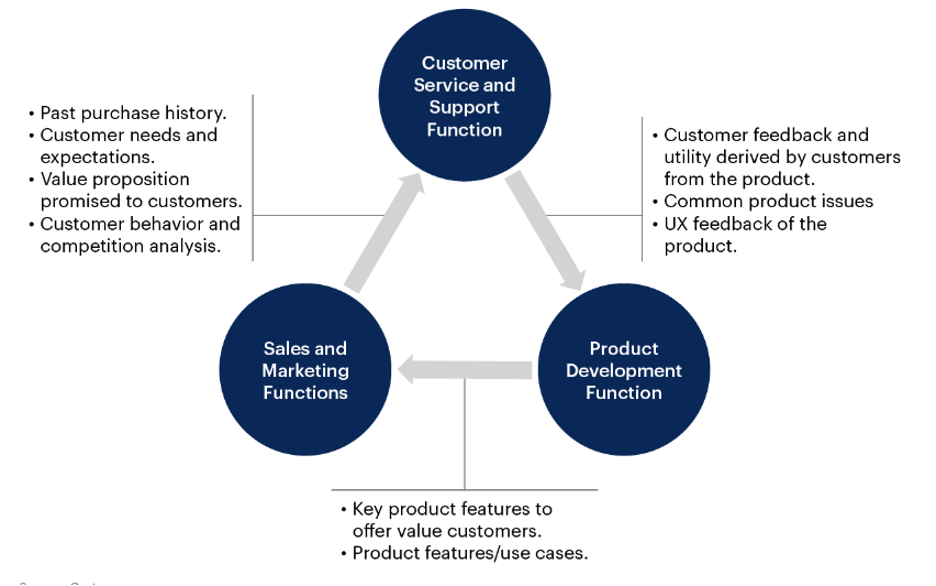In the quest to improve customer experience, building a suitable organizational structure is critical to success. According to Gartner research, 78% of service leaders say they’d consider making changes to their organization structure for the sake of improving customer experience. When building a customer-centric organizational structure, service leaders must consider designs that facilitate reps’ easy understanding of customer context in order to provide a quick resolution and break down silos between functions such as sales, marketing and product that hamper access to this knowledge.
In order to achieve true customer-centricity, customer service and support leaders should:
Use Rep Specialization to Deliver Quick Resolution
When it comes to customer perception, quick resolution of customer service issues is key. According to Gartner research, customers who could resolve their issues with ease and were satisfied with the service experience rated the quality of the product they purchased 25% higher than those who weren’t satisfied with the service experience.
To deliver personalized and quick resolution to customers, organizations should align reps in a way that helps them build expertise over a particular type of customer, product feature or query. This alignment can ensure the targeted allocation of the right queries to the right reps, reducing the time it takes to provide the customer with the best resolution.
Service and support leaders should consider segmenting customer service representatives by:
Product or Issue Topic – Leaders in organizations with multiple product offerings and complex inbound customer queries should focus on developing rep expertise in specific product or topic areas. This requires efficient skill-based routing to divert customer questions to the correct rep. Categorize customer queries based on their complexity and leverage past data to do so. Agents should then be categorized based on their skill set and experience, progressing over time to deal with more complex issues.
Customer Segment – Organizations with a homogenous set of product offerings, with relatively few product differences but a diverse customer base, can leverage this form of rep alignment. This allows reps to develop expertise in the preferences and behaviors of specific customer segments, such as customers based in certain geographies or business/consumer customers. As reps become knowledgeable about the specific customer segment, they are better positioned to understand the customers’ needs and patterns.
Break Cross-Functional Silos to Access Customer Information
Service leaders often require a comprehensive view of end-to-end customer journeys, which can be hampered by organizational silos. Customer information is often siloed and resides in different functions. While tools and technologies such as customer journey analytics can aid in the understanding of customer journeys, instituting collaboration processes and driving a cohesive customer-centric culture by establishing cross-functional reporting lines is a critical component for CX success.
For example, sales and marketing often hold valuable information on customers, such as preferences, motivations for purchasing and product expectations. This data can aid customer service leaders in better understanding the customer. Likewise, the customer information held by the customer service function can help product teams to better understand critical customer pain points. (See chart.)

There are two forms of cross-functional collaboration that service and support leaders should consider:
Product-Customer Service Collaboration
The service function has information on key customer pain points, which can become valuable input for identifying and eradicating product issues. Acting on the information gathered from customer inquiries helps build customers’ trust in the organization as they can see their feedback being incorporated. Furthermore, product enhancements can help reduce the volume of inbound customer queries. All of this collaboration has a direct impact on customer experience.
Sales-Customer Service Collaboration
Delivering value enhancement is key to increasing customer loyalty. This involves using service interactions to deliver information about the product the customer purchased. According to Gartner research, customers facing a stay/go decision who receive a value-enhancing interaction have an 82% likelihood to stay with the organization. A critical component of delivering value enhancement includes offering personalized service interactions contextualized based on the customer’s needs. Contextual conversations require an advanced understanding of the customer’s history with the company and their behavior and preferences.
Sales and marketing hold valuable customer information that can help service leaders deliver effective value enhancement, but often challenges in cross-functional collaboration hinder access to this data. Functional siloes are one of the biggest barriers to the free flow of customer information.
In order to break down silos and improve collaboration, service leaders should start by aligning with sales leaders and creating a plan to drive a collaborative culture between the two organizations. For example, they can put in place cross-functional teams focused on building out and optimizing customer journeys.
Organizations can also change the reporting lines to ensure better collaboration between the two functions. Regular group meetings and enhanced interactions enable employees to better understand the distinct nature of work in sales and in customer service. This also helps build stronger collaboration and facilitate smoother customer handoffs between the two functions, building an overall culture of collaboration.





